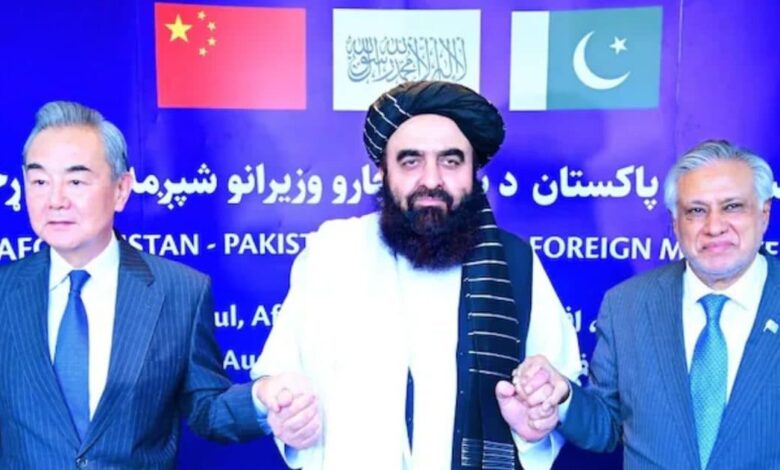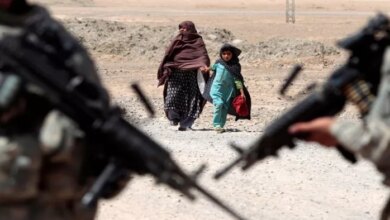चीनी मंत्री भारत यात्रा के बाद CPEC विस्तार पर चर्चा करते हैं

Kabul’s Connectivity: The Expansion of CPEC and Its Implications
Chinese Foreign Minister Wang Yi recently embarked on a trip to Afghanistan, directly after visiting India, marking a significant diplomatic maneuver in the region. The backdrop of this journey involves deepening discussions surrounding the China-Pakistan Economic Corridor (CPEC) and its potential expansion to Kabul. The developments signal both opportunities and challenges, emphasizing the intricate geopolitical dynamics at play.
During the visit, Wang Yi attended a trilateral meeting hosted by the acting Afghan Foreign Minister, Amir Khan Muttaqi, alongside Pakistan’s Foreign Minister, Ishaq Dar. This sixth round of talks aimed to enhance cooperation and address regional security concerns, particularly in light of terrorism and its impact on the three nations involved.
The spotlight of the discussions revolved around CPEC’s extension to Kabul. The agreement among the three countries signifies a mutual acknowledgment of the potential benefits that could arise from this key initiative. The groundwork for these discussions was laid in May, during previous talks held in Beijing, where both Pakistan and Afghanistan agreed to bolster their bilateral relations.
The Vision of CPEC
CPEC is often referred to as a “dream project” by Chinese President Xi Jinping. It represents a cornerstone of China’s Belt and Road Initiative (BRI), launched in 2013 to create a network of trade routes spanning multiple continents. The project includes highways, railways, pipelines, and energy projects that link China’s Xinjiang region with Pakistan’s Gwadar Port, providing Pakistan with much-needed infrastructure and economic growth.
The aim of CPEC is not merely economic; it serves as a strategic asset for both China and Pakistan. With investments totaling around $62 billion, key components of CPEC include the expansion of the Karakoram Highway and the development of various power plants. However, the controversial nature of the corridor, particularly its passage through Gilgit-Baltistan—claimed by India as part of Jammu and Kashmir—has elicited strong resistance from New Delhi.
The expansion toward Kabul could further cement Beijing’s influence in Central Asia and provide an enhanced trade route that benefits all countries involved. This geopolitical maneuvering is particularly relevant as both India and Pakistan prepare to participate in upcoming meetings concerning regional collective security, further underscoring the strategic importance of CPEC.
The Role of Afghanistan
For Afghanistan, the prospect of being linked to the CPEC presents an opportunity for economic rejuvenation. The country has faced profound instability, making infrastructure and economic development paramount for long-term recovery. CPEC’s expansion could provide access to markets, essential resources, and investment, which are crucial to revitalizing Afghanistan’s economy.
However, Afghanistan’s internal landscape remains fraught with challenges, including the governance issues under the Taliban regime. The country requires stable political structures and a commitment to security from all parties involved to reap the full benefits of this connectivity. With Taliban leadership still adjusting to its international standing, navigating relationships with regional powers like China and Pakistan becomes a delicate balancing act.
Strategic Implications for India
India’s apprehensions regarding CPEC are multifaceted. Not only does it perceive the project as a direct challenge to its influence in the region, but it also views it as part of a broader strategy of encirclement by China, often dubbed the “string of pearls.” This refers to China’s development of port facilities and other strategic assets throughout the Indian Ocean region, correlating with its extensive investments in neighboring countries.
Despite India’s opposition, CPEC’s progression reflects a shift in regional dynamics. With China solidifying its presence in Afghanistan, India might reconsider its strategic approach to the region. Historically, India has engaged in various development projects in Afghanistan, aiming to counterbalance Pakistan’s influence. The burgeoning connectivity facilitated by CPEC could potentially alter trade routes and alliances, compelling India to reassess its strategies in South Asia.
The Bigger Picture
The trilateral talks among China, Pakistan, and Afghanistan reflect a significant shift in regional diplomacy. Wang Yi’s direct engagement with Afghanistan post-India visit delineates a conscious effort to extend China’s influence into Central Asia, a strategically vital area characterized by its rich resources and significant trade routes.
Moreover, this initiative aligns with Wang Yi’s emphasis on “not being a threat” to neighboring states, countering narratives of China’s expansionist ambitions. Through fostering cooperation, Beijing positions itself as a stabilizing force in the region, although critics question the long-term viability of such partnerships given the underlying tensions and conflicting interests among the parties involved.
The economic prospects of CPEC are promising, but the realization of these benefits depends heavily on the political will and commitment of all stakeholders. The trilateral cooperation aims to tackle shared challenges like terrorism, which disrupts trade and security. The commitment to address these issues could lead nations toward a more collaborative future, transforming the geopolitical landscape of South Asia.
Conclusion
The expansion of CPEC towards Kabul is emblematic of a complex interplay of economic ambition and geopolitical strategy. It showcases the potential for cooperation among Pakistan, China, and Afghanistan while highlighting India’s critical role in the overarching narrative. As the region stands on the cusp of significant transformation, the actions and diplomacy of these nations will shape not only their immediate futures but also the broader geoeconomic dynamics in South Asia.
Thus, as discussions surrounding CPEC continue, the focus will remain on how effectively these nations can translate diplomatic dialogues into tangible results that foster peace, security, and economic prosperity in a historically volatile area. The future remains uncertain, but the door for constructive engagement has been opened through these pivotal discussions, and how they navigate this path will determine the trajectory of regional stability for years to come.





